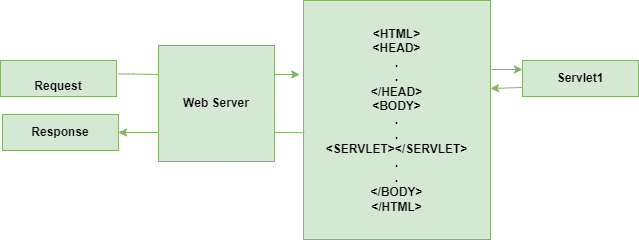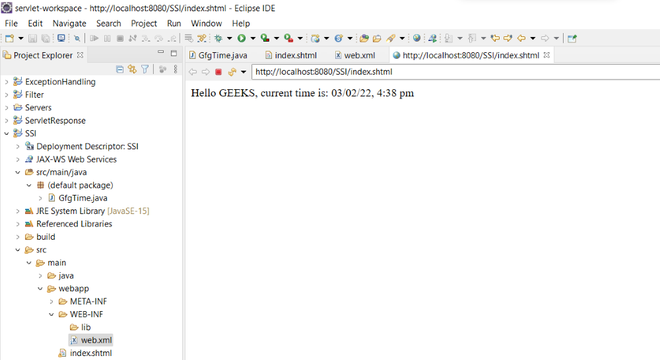Servlet – Server Side Include (SSI)
Last Updated :
14 Feb, 2022
Server-side includes are instructions and directives included in a web page that the web server may analyze when the page is provided. SSI refers to the servlet code that is embedded into the HTML code. Not all web servers can handle SSI. so you may read documents supported by a web server before utilizing SSI in your code.
Syntax:
<SERVLET CODE=MyGfgClassname CODEBASE=path initparam1=initparamvalue initparam2=initparam2value>
<PARAM NAME=name1 VALUE=value1>
<PARAM NAME=name2 VALUE=value2>
</SERVLET>
Here the path indicates the MyGfgClassname class name path in the server. you can set up the remote file path also. the remote file path syntax is,
http://server:port/dir
When a server that does not support SSI sees the SERVLET> tag while returning the page, it replaces it with the servlet’s output. The server does not parse all of the pages it returns; only those with a.shtml suffix are parsed. The class name or registered name of the servlet to invoke is specified by the code attributes. It’s not required to use the CODEBASE property. The servlet is presumed to be local without the CODEBASE attribute. The PARAM> element may be used to send any number of parameters to the servlet. The getParameter() function of ServletRequest may be used by the servlet to obtain the parameter values.

Example
index.shtml
HTML
<HTML>
<HEAD><TITLE>GEEKSFORGEEKS</TITLE></HEAD>
<BODY>
Hello GEEKS, current time is:
<SERVLET CODE=GfgTime>
</SERVLET>
</BODY>
</HTML>
|
GfgTime.java
Java
import java.io.*;
import java.text.*;
import java.util.*;
import javax.servlet.*;
import javax.servlet.http.*;
public class GfgTime extends HttpServlet
{
private static final long serialVersionUID = 1L;
public void doGet(HttpServletRequest req, HttpServletResponse res) throws ServletException, IOException
{
PrintWriter out = res.getWriter();
Date date = new Date();
DateFormat df = DateFormat.getInstance();
out.println("Hello GEEKS, current time is:");
out.println(df.format(date));
}
}
|
web.xml
XML
<web-app>
<servlet>
<servlet-name>GfgTime</servlet-name>
<servlet-class>GfgTime</servlet-class>
</servlet>
<servlet-mapping>
<servlet-name>GfgTime</servlet-name>
<url-pattern>/index.shtml</url-pattern>
</servlet-mapping>
<welcome-file-list>
<welcome-file>index.shtml</welcome-file>
</welcome-file-list>
</web-app>
|
Output:

Share your thoughts in the comments
Please Login to comment...